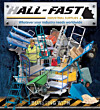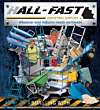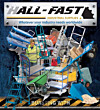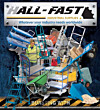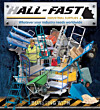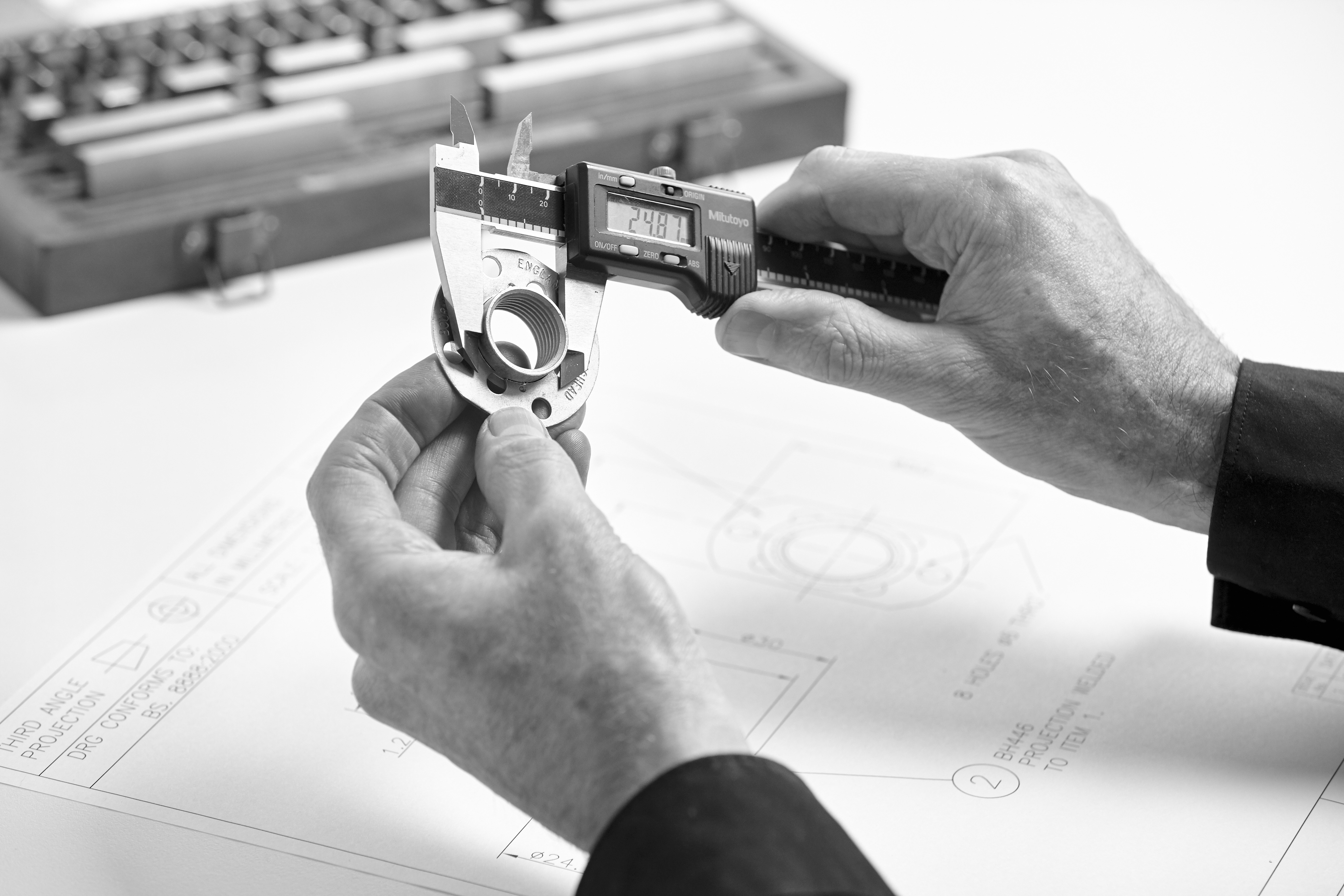
Measuring the True Strength of Modern Adhesive Fastening Systems
One of the most common questions when considering alternatives to traditional mechanical fasteners is simply, "How strong are adhesive fasteners?" This critical question deserves a comprehensive answer, as today's advanced bonding technologies deliver performance capabilities that challenge many long-held assumptions about adhesive strength limitations.
Modern adhesive fastening systems no longer represent a compromise when strength is required. Instead, engineered Bighead bonding fasteners and similar systems often outperform traditional mechanical connections in specific applications while offering additional benefits mechanical fasteners cannot provide.
Quantifying Adhesive Fastener Strength
Understanding adhesive strength requires examining several different performance metrics:
Tensile Strength Measurements
Tensile strength (pulling forces perpendicular to the bond surface) varies significantly:
- Standard construction adhesives: 300-500 psi (2.1-3.4 MPa)
- Structural epoxy systems: 2,000-6,000 psi (13.8-41.4 MPa)
- Advanced acrylic adhesives: 3,500-4,500 psi (24.1-31.0 MPa)
- High-performance polyurethanes: 1,800-3,000 psi (12.4-20.7 MPa)
- Engineering-grade cyanoacrylates: 2,000-4,000 psi (13.8-27.6 MPa)
For context, mild steel has a tensile strength around 60,000 psi (413.7 MPa), but mechanical fasteners rarely harness this full strength due to stress concentration around holes and threads.
Shear Strength Performance
Shear strength (resistance to sliding forces parallel to the bond) often exceeds tensile strength:
- Standard construction adhesives: 300-800 psi (2.1-5.5 MPa)
- Structural epoxy systems: 2,500-4,500 psi (17.2-31.0 MPa)
- Advanced acrylic adhesives: 3,000-4,000 psi (20.7-27.6 MPa)
- High-performance polyurethanes: 1,500-2,500 psi (10.3-17.2 MPa)
- Engineering-grade cyanoacrylates: 2,500-3,500 psi (17.2-24.1 MPa)
Peel and Cleavage Resistance
These challenging load types represent adhesive systems' vulnerability:
- Standard construction adhesives: 2-15 pli (pounds per linear inch)
- Structural epoxy systems: 25-60 pli
- Advanced acrylic adhesives: 35-50 pli
- High-performance polyurethanes: 30-75 pli
- Engineering-grade cyanoacrylates: 5-10 pli
Well-designed adhesive fastening systems maximize shear and tensile loading while minimizing peel and cleavage forces.
Surface Area Advantage
The true strength of adhesive fasteners comes from their distributed load characteristics:
- Mechanical fasteners: Concentrate loads at discrete points
- Adhesive fasteners: Distribute load across the entire bond area
This means a 1-square-inch adhesive bond with modest strength of 1,000 psi provides holding power equivalent to 1,000 pounds—similar to multiple mechanical fasteners but without stress concentration points.
Strength Comparison: Adhesive vs. Mechanical Fasteners
How do adhesive systems compare to traditional mechanical fasteners in real-world applications?
Load Capacity Comparisons
For perspective, consider these comparative examples:
- A properly designed 2-square-inch structural adhesive bond can support the weight of a compact car (approximately 3,000 pounds)
- A single high-performance metal-to-metal adhesive bond the size of a postage stamp can support the weight of an adult
- Major aircraft manufacturers now rely on structural adhesives combined with mechanical fasteners for primary airframe construction, where safety margins are exceptionally high
Mechanical Fastener Limitations
Traditional fasteners have inherent strength limitations:
- Stress concentration around holes reduces effective material strength
- Fastener material limits maximum load capacity
- Thread engagement depth restricts performance in thin materials
- Vibration loosening progressively reduces functional strength
- Corrosion and environmental factors can significantly degrade performance
Adhesive Performance Advantages
In certain loading scenarios, adhesive systems demonstrate superior performance:
- Fatigue resistance under cyclical loading often outperforms mechanical fasteners
- Vibration damping maintains integrity where mechanical fasteners would loosen
- Load distribution eliminates stress concentration points
- Gap filling capability accommodates manufacturing tolerances
- Mixed material joining without galvanic corrosion concerns
Factors Affecting Adhesive Fastener Strength
The performance of bonding systems depends on several critical variables:
Substrate Material Impact
Surface composition significantly influences adhesive strength:
- High surface energy materials (metals, glass) generally bond more strongly
- Low surface energy materials (some plastics, coated surfaces) require special preparation
- Porous materials may need sealing for optimal adhesion
- Surface texture affects mechanical interlocking component of adhesion
- Material flexibility influences stress distribution within the bond
Environmental Exposure Effects
Operating environment significantly impacts long-term strength:
- Temperature range: Most adhesives lose strength at elevated temperatures
- Humidity exposure: Moisture can affect bond integrity for some adhesive types
- UV radiation: Sunlight may degrade certain adhesive chemistries
- Chemical exposure: Solvents, oils, and chemicals can attack bond lines
- Thermal cycling: Repeated expansion/contraction can stress adhesive bonds
Joint Design Influence
The design of the bonded assembly dramatically affects performance:
- Joint geometry: Properly designed overlaps maximize strength
- Bond line thickness: Optimal thickness varies by adhesive type (typically 0.002"-0.010")
- Load path engineering: Directing forces in shear rather than peel
- Bond area sizing: Providing adequate surface area for anticipated loads
- Edge effects management: Preventing stress concentration at bond edges
Application-Specific Strength Requirements
Different applications have widely varying performance needs:
Automotive Industry Applications
Modern vehicles incorporate adhesive fastening where strength is critical:
- Structural components: Frame and chassis bonding with 3,000+ psi strength requirements
- Panel attachment: Hem flange bonding distributing crash forces
- Glass bonding: Windshield installation contributing to structural rigidity
- Interior assembly: Weight-bearing components supporting occupants
- Powertrain components: Vibration-resistant bonds withstanding thermal cycling
Construction and Building Applications
Architecture and construction utilize adhesive strength for:
- Structural panels: Floor and wall systems with significant load-bearing requirements
- Exterior cladding: Facade elements supported against wind and weather forces
- Interior fixtures: Cabinetry and built-ins bearing substantial weight
- Reinforcement systems: Structural strengthening of existing elements
- Foundation components: Critical structural elements requiring long-term durability
Electronics Manufacturing
Modern electronics rely on adhesive strength for:
- Component mounting: Securing parts against shock and vibration
- Heat sink attachment: Thermal transfer while bearing mechanical loads
- Housing assembly: Structural integrity of device enclosures
- Display bonding: Edge-to-edge screen attachment with minimal bonding area
- Waterproofing seals: Maintaining environmental protection while bearing loads
Engineered Adhesive Fastening Systems
Bighead bonding fasteners represent the evolution of adhesive technology into comprehensive fastening systems:
Hybrid Bonding-Mechanical Systems
Advanced fastening often combines multiple technologies:
- Load-spreading base plates distributing forces across larger areas
- Integrated attachment points compatible with standard hardware
- Engineered geometry directing forces in optimal directions
- Material-specific designs matching thermal expansion characteristics
- Multi-purpose functionality providing both attachment and sealing
Performance-Engineered Solutions
Modern systems are designed for specific performance profiles:
- Vibration-resistant grades maintaining strength in dynamic environments
- Temperature-optimized formulations for specific operating ranges
- Electrically conductive or insulating options as applications require
- Impact-resistant variants absorbing shock without bond failure
- Chemically resistant types for harsh environment applications
Strength Testing and Validation Methods
Understanding "how strong are adhesive fasteners" requires proper testing:
Standard Test Protocols
Industry-standard testing methods include:
- ASTM D897: Standard test method for tensile properties of adhesive bonds
- ASTM D1002: Standard test method for apparent shear strength
- ASTM D3163: Standard method for strength properties in shear by tension loading
- ASTM D1876: Standard test method for peel resistance (T-peel test)
- ISO 4587: Determination of tensile lap-shear strength of rigid-to-rigid bonded assemblies
Real-World Validation Approaches
Beyond laboratory testing, practical validation includes:
- Application-specific testing replicating actual use conditions
- Environmental conditioning assessing performance after aging
- Dynamic load testing evaluating performance under varying forces
- Combined stress evaluation applying multiple force types simultaneously
- Statistical analysis establishing safety factors for critical applications
Case Study: Adhesive Strength in Action
A heavy equipment manufacturer needed to attach access panels to construction machinery. Traditional welding caused warping while mechanical fasteners created stress points and vibration loosening.
By implementing Bighead bonding fasteners, they achieved:
- Uniform 3,500 psi shear strength across the entire bond area
- Total load capacity of 12,000 pounds per assembly
- Zero failures in field testing despite extreme vibration
- Maintenance-free performance without retightening requirements
- Weight reduction compared to previous mechanical attachment methods
Making Strength-Based Selection Decisions
When evaluating if adhesive fasteners provide sufficient strength, consider:
Application Assessment Process
A methodical approach ensures appropriate selection:
- Identify all loads the connection will experience (static, dynamic, impact)
- Determine load directions and design to favour shear over peel or cleavage
- Calculate required strength with appropriate safety factors
- Consider environmental exposure throughout the service life
- Evaluate substrate materials and their compatibility with adhesive options
- Assess joint design for stress distribution and load path optimization
Working with Safety Margins
Responsible design includes appropriate safety factors:
- Non-critical applications: 2-3× safety factor typical
- Structural applications: 4-5× safety factor common
- Safety-critical systems: 8-10× safety factor often required
- Environmental degradation: Additional factors for harsh conditions
- Fatigue considerations: Further margins for cyclical loading
Future of Adhesive Fastener Strength
Ongoing developments continue to expand performance capabilities:
Emerging Technologies
Recent advancements include:
- Nano-reinforced adhesives with substantially improved strength-to-weight ratios
- Self-healing formulations maintaining strength despite minor damage
- Gradient-property systems with tailored flexibility across the bond line
- Biomimetic adhesives inspired by nature's strongest connections
- Smart adhesives with embedded sensors monitoring bond integrity
Expanding Application Frontiers
Innovative high-strength applications include:
- Primary aircraft structures certified for flight-critical applications
- Next-generation vehicle construction enabling multi-material lightweight design
- Infrastructure rehabilitation strengthening aging bridges and buildings
- Microelectronics assembly at increasingly miniaturized scales
- Medical device construction meeting biocompatibility and durability requirements
The Bottom Line on Adhesive Fastener Strength
The answer to "how strong are adhesive fasteners" is clear: when properly selected, designed, and installed, modern adhesive fastening systems provide exceptional strength that meets or exceeds mechanical fastener performance in many applications. The distributed nature of adhesive bonding often delivers better overall performance by eliminating stress concentration points while providing additional benefits like vibration damping, sealing, and thermal insulation.
Bighead bonding fasteners represent the cutting edge of this technology, combining the structural advantages of adhesive bonding with engineered attachment systems designed for specific loading scenarios and application requirements.
For applications where strength is critical, today's advanced adhesive fasteners offer compelling alternatives to traditional mechanical fastening methods, often delivering superior overall performance when all factors are considered.



